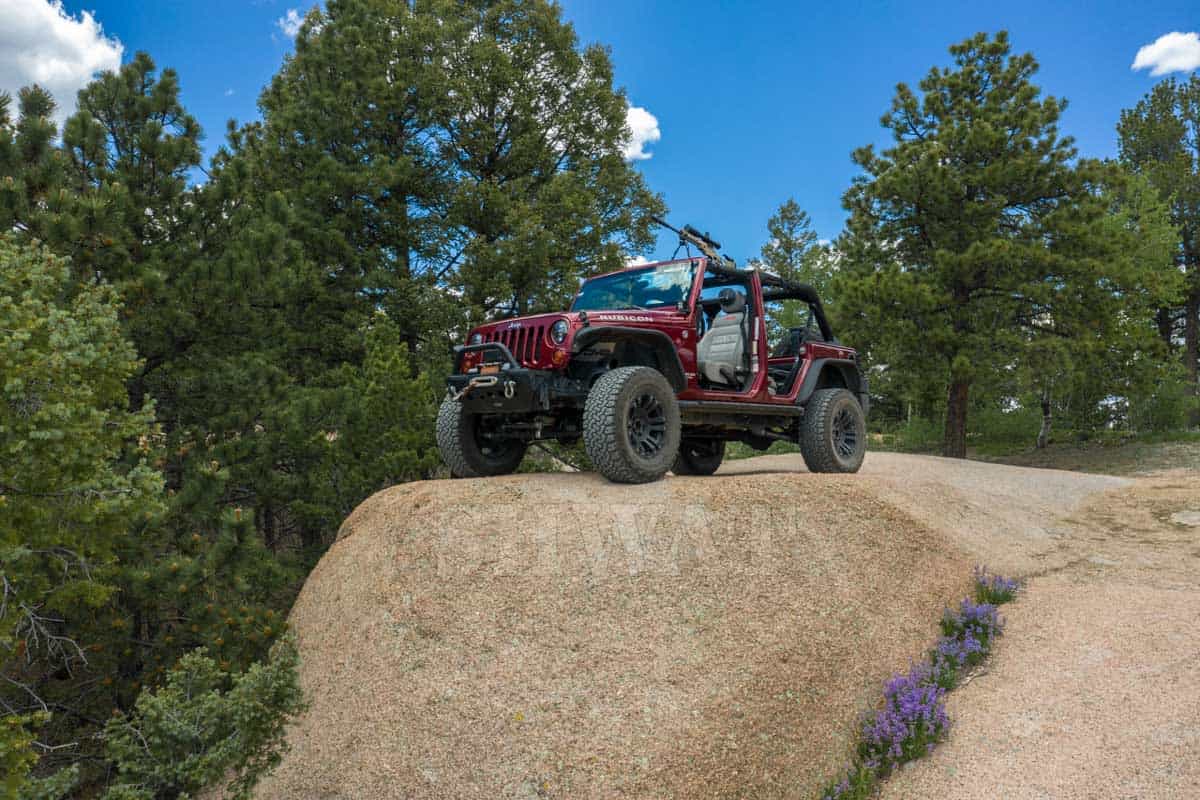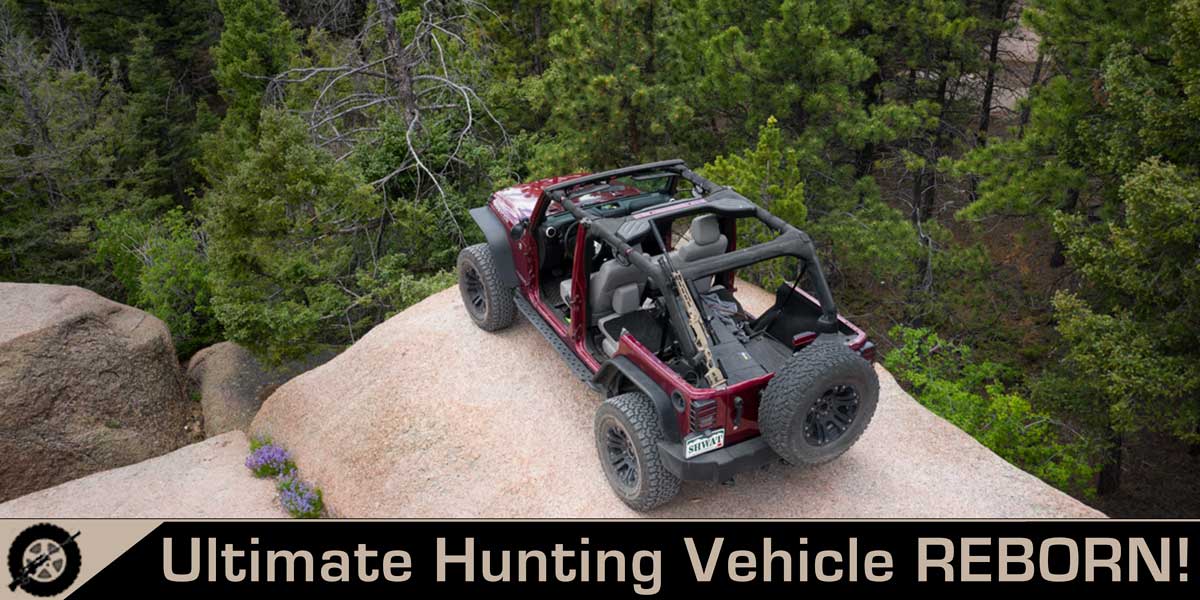 Building the Ultimate Hunting Vehicle is a real challenge. Like building a precision rifle, virtually every decision dominos, impacting something else. Our UHV build process transformed a used 2012 Jeep JKU Rubicon, but the transformation is ongoing.
Building the Ultimate Hunting Vehicle is a real challenge. Like building a precision rifle, virtually every decision dominos, impacting something else. Our UHV build process transformed a used 2012 Jeep JKU Rubicon, but the transformation is ongoing.
What I learned with this installment causes me to rethink a couple of steps backward. I hope it helps you build your Ultimate Hunting Vehicle more efficiently. This part of the story is so big and important to the process that “Reborn” is the only adequate description that hit me. Cut to the chase, most of this boils down to keeping your UHV going as the miles add up and parts wear. Most, but not all…
To set up this part of our UHV story, let’s look back at project we did a few years ago called “Grandpa’s Gun Reborn.” We took a run of the mill Wal-Mart level Remington 700 that belonged to my kids’ grandfather and turned it into an arguably exotic long range precision rifle you see in some of these pictures.
Early in the Grandpa’s Gun Reborn story we chose to add a Nightforce NXS 3.5-15×50 scope. A 300 Win Mag should use an optic that matches its range and use, not to mention the overall build level. Without that level of optic the whole build would be compromised.
Stronger Parts for Stronger Performance
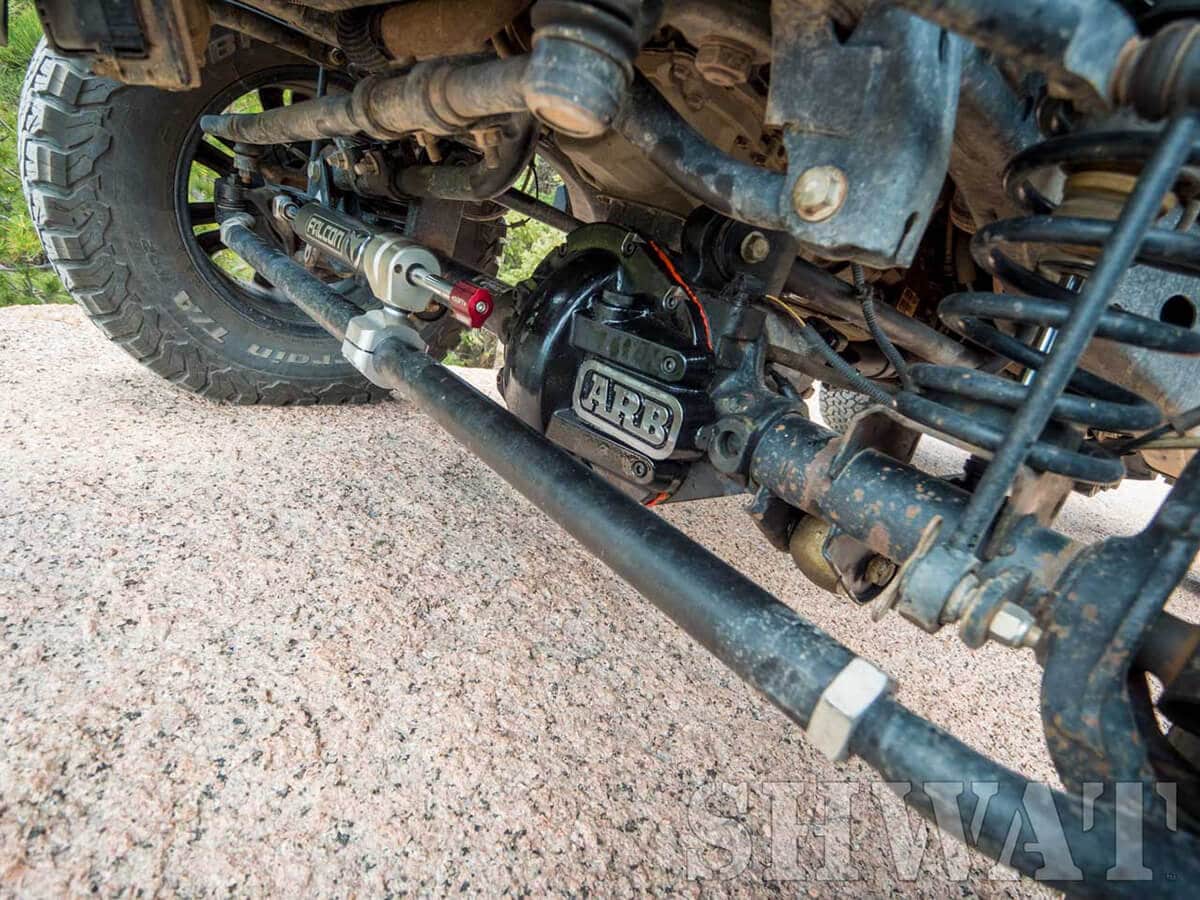
Yep, beefy.
And this is what I discovered on the Ultimate Hunting Vehicle: The build was compromised. It’s like I had a 1-6x scope on custom long range rifle build. Despite having substantially built up the front end (a weak point on JKU jeeps that have to be reliably robust), I had not upgraded to a bigger, stronger tie rod. At this point, the tie rod, or maybe its ends, was literarily the weakest link on the Rubicon’s front end. The factory tier rod no longer matched the specifications of the UHV build. Not to mention, that with almost 100,000 miles on the jeep, those ends were worn out.
Extreme Terrain came through with a Teraflex HD Tie Rod Kit. Every time I upgrade something on the front end of the jeep, I have the same two reactions: First, WOW, this new piece is beefy! And, my gosh, this changes handling so dramatically! Why didn’t it come this way?
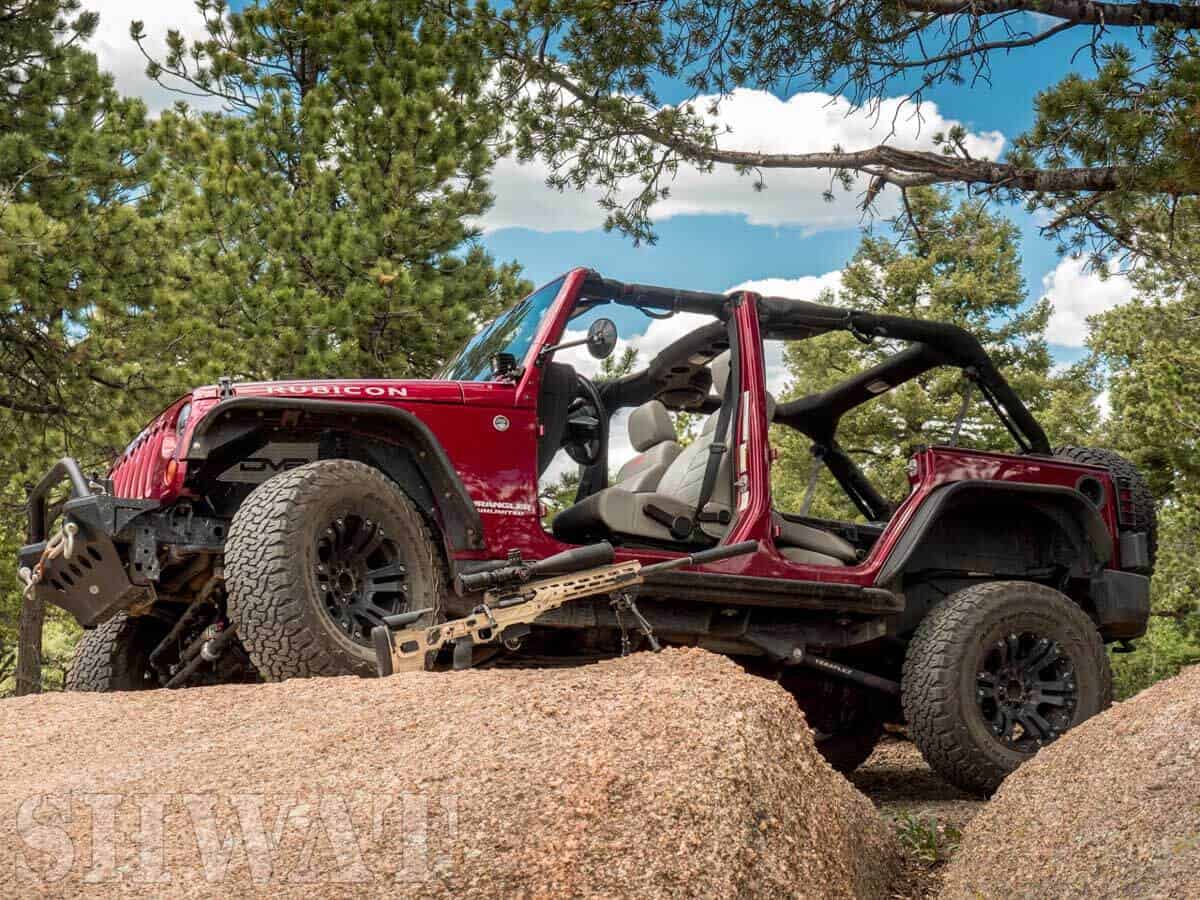 Remember, the purpose of the Ultimate Hunting Vehicle build is to have a vehicle that will take us anywhere we want to scout, hunt or otherwise adventure and then get us back safely and without breaking.
Remember, the purpose of the Ultimate Hunting Vehicle build is to have a vehicle that will take us anywhere we want to scout, hunt or otherwise adventure and then get us back safely and without breaking.
Jeep owners routinely bend or break tie rods in the back country. Add bigger tires to your build and the resulting increased strain, then do the math. Teraflex says this tie rod is literally 200 times stronger than the factory one. Though my ends were worn out, thankfully my tie rod had yet not broken.
My upgrade to the Teraflex HD Tie Rod Kit replaced both the tie rod and the ends. I used the required maintenance for wear items as an opportunity to upgrade to something two hundred times stronger. Not to mention the getting substantial capability/reliability upgrade. In turn, those delivered a serious peace of mind dividend.
Control
The other dividend is control. I couldn’t tell you just what was off about my steering before, but something was. I would say my steering felt sloppy, imprecise. “That’s just because you have big tires, it’s the price you pay,” someone said. But I reject that categorically. A rifle is a mechanical device and if it’s not working smoothly you can diagnose and fix it. Why should a jeep be any different?
 As it turns out, not only were my tie rod ends worn, my ball joints were in serious need of replacement. If you’re building the Ultimate Hunting Vehicle, “replacement” translates to “upgrade.” Time for more Teraflex from Extreme Terrain; this time the Teraflex Heavy Duty Ball Joints. Teraflex says these heavy duty upgrades will be the last ones you’ll ever need. They are both greasable and adjustable should they wear some.
As it turns out, not only were my tie rod ends worn, my ball joints were in serious need of replacement. If you’re building the Ultimate Hunting Vehicle, “replacement” translates to “upgrade.” Time for more Teraflex from Extreme Terrain; this time the Teraflex Heavy Duty Ball Joints. Teraflex says these heavy duty upgrades will be the last ones you’ll ever need. They are both greasable and adjustable should they wear some.
Combined with the new tie rod and ends, the transformation in steering and drivability was remarkable! In fact, when putting it all back together the shop discovered that we didn’t have a bracket for our Falcon steering stabilizer to fit the new tie rod. While waiting for the proper bracket to come in from Teraflex I drove without the stabilizer.
A Mistake?
Would you believe control, handling, steering were all better than running with the stabilizer and worn out tie rod ends and ball joints? I drove highway miles and washboarded fire road miles. I was amazed at how well it handled. Which sort of begs the question, should I have gotten the stabilizer in the first place?
That Falcon stabilizer is flat out amazing. It was masking or compensating for really worn parts. So, yes, for sure, I’m glad I got it. And I’m glad it’s now back on because it really does level up the steering, as described in Part 1 of the Ultimate Hunting Vehicle series. I believe everything in the front end is now better than new and the UHV drives better than ever!
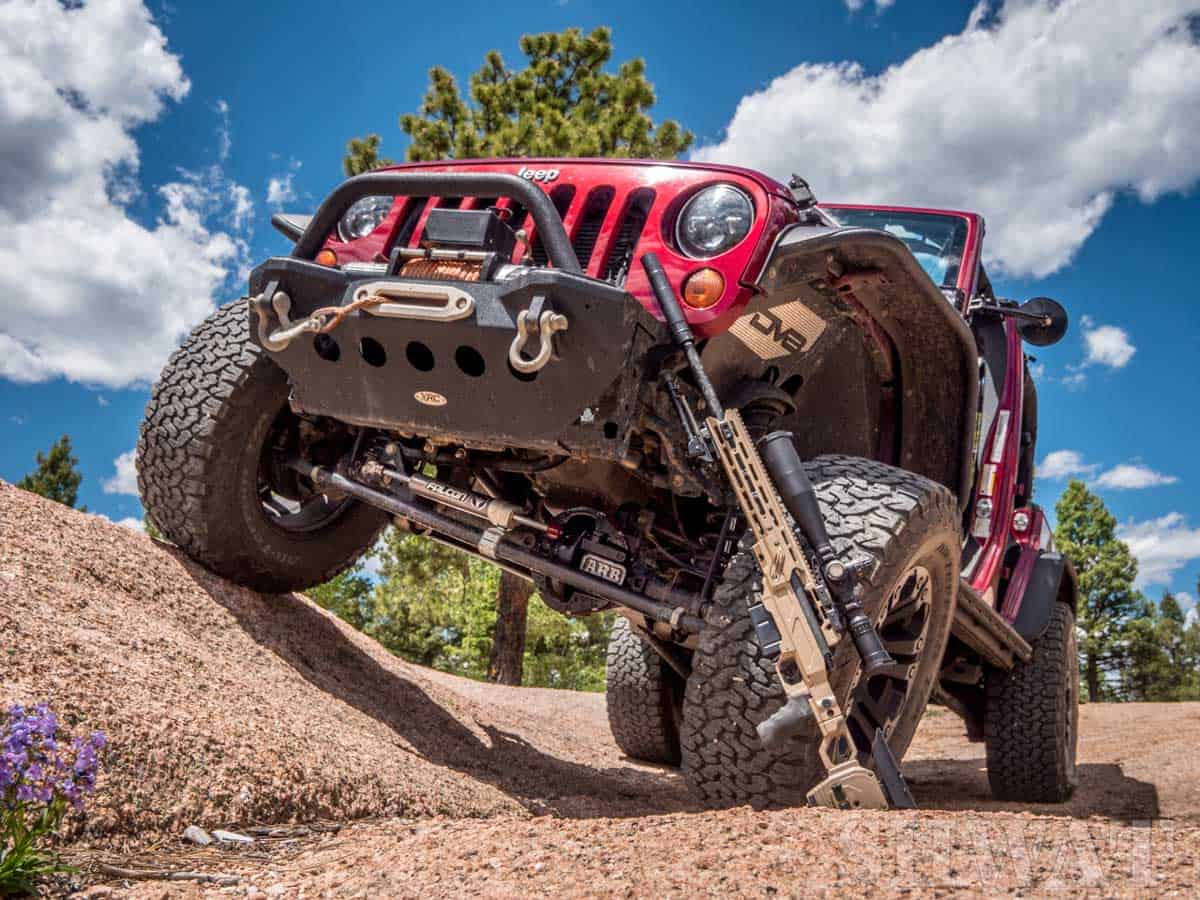
The Falcon Stabilizer is a win. Actually, there’s a whole lot of winning going on here.
New Gears
If you know a Jeep JK owner who has changed their tires from stock to 35s or bigger, you may have heard them complain about the lack of power that followed. But then they will justify it saying, “I guess it’s not that bad.”
Yes it is! We humans want to justify and defend the decisions we make. So while we’ll complain one day about driving a slug on bigger tires, the next day we’ll excuse it because we have more clearance and better looks!
Yes, I’m guilty, too. But not anymore!
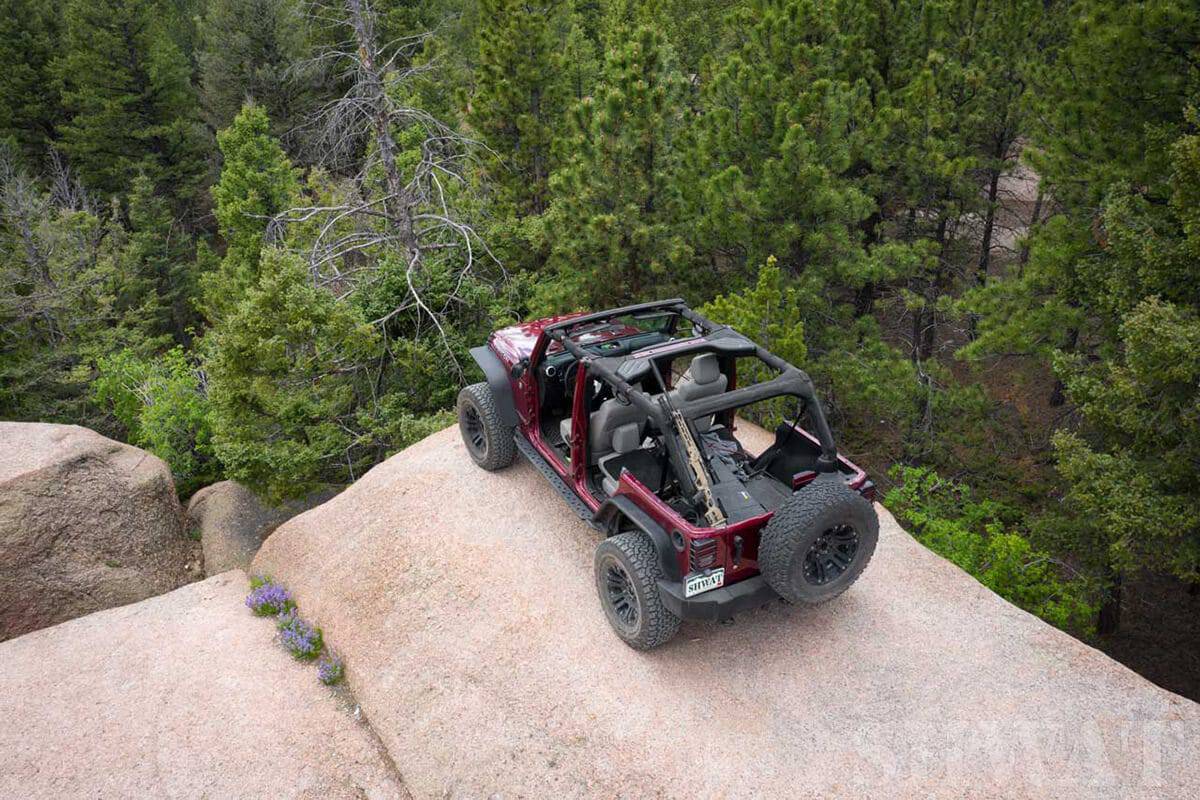 The Ultimate Hunting Vehicle has been reborn! I kid you not, re-gearing gave my jeep a whole new life, a whole new power, and entirely different drive! No more jumping between gears, struggling to hold speed on an interstate climb. It is smoother, predictable and gets better gas mileage?! Yes! The UHV is reborn!
The Ultimate Hunting Vehicle has been reborn! I kid you not, re-gearing gave my jeep a whole new life, a whole new power, and entirely different drive! No more jumping between gears, struggling to hold speed on an interstate climb. It is smoother, predictable and gets better gas mileage?! Yes! The UHV is reborn!
Sounds exuberant, but even my wife is sold (impressive, considering the labor alone on this is a costly upgrade). It’s also a bit of a pain… After installing your gears you have to dive at no more than 55 miles per hour for 500 miles to break in the new gears. You baby them. That’s frustrating knowing what’s now in your differentials.
We went with Yukon Gear Dana 44 Front Axle/44 Rear Axle Ring Gear and Pinion Kit w/ Install Kit – 4.56 Gears. If our goal was rock crawling, we’d have gone with 4.88 gears. But this is the Ultimate Hunting Vehicle story, and the 4.56 ratio with 35 inch tires brings everything back in line with what the engineers at Jeep planned.
The Big Consideration – Tire Size
In the shooting world, we endlessly debate and obsess over caliber choices. In the jeep world, the same dynamics surround tire size options.
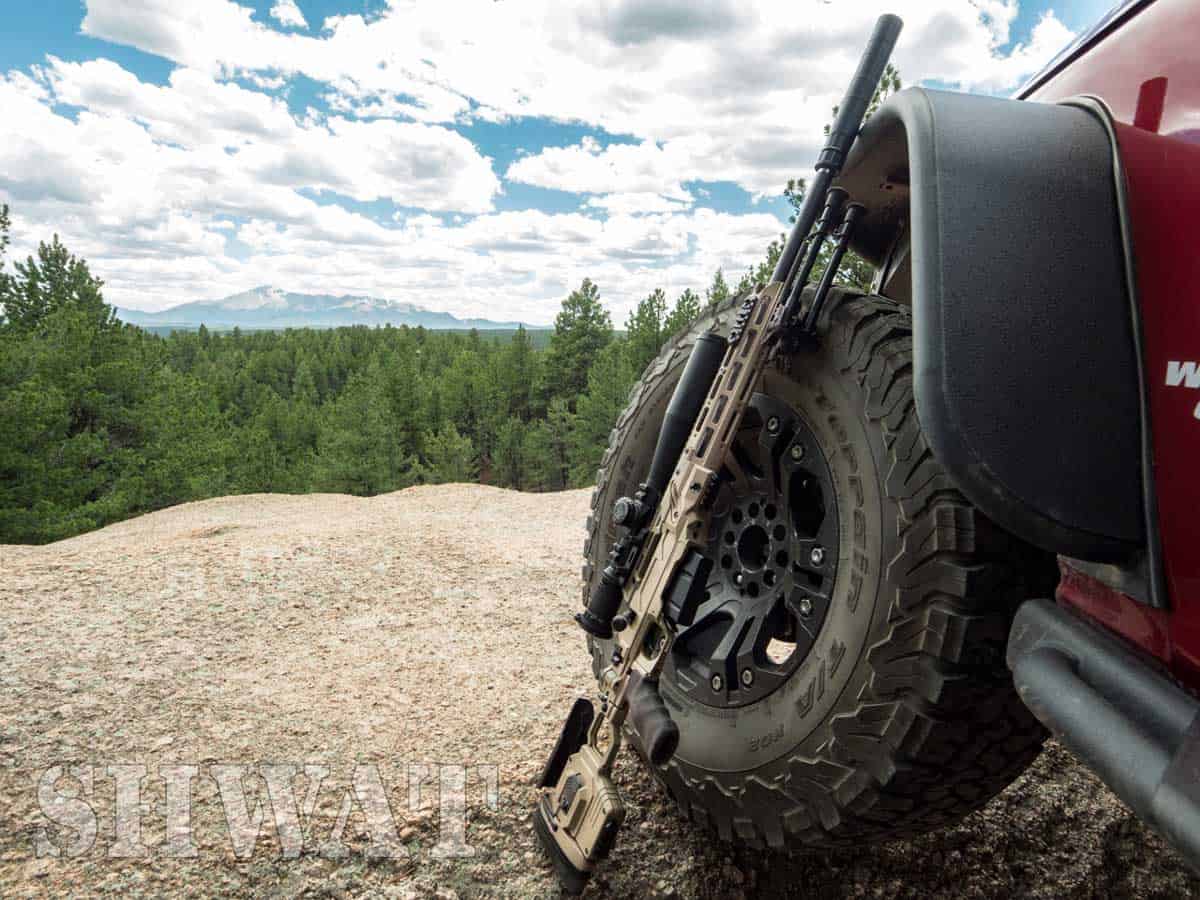
35″ Tires Work Quite Well
Part of my challenge with figuring out the gearing to get was sorting out my tire size preference. Four door jeeps simply must have 37 inch tires to be respectable in many circles it seems. That includes my favorite jeep shop, at least to some degree. But with my long arm lift, if my jeep gets any taller I’m going to have to work to get in it every time I open the door!
Seriously, parked next to another JKU that had 37 inch tires we pulled out a tape measure. My Ultimate Hunting Vehicle is already just as tall. On top of that, my 35 inch tires already give me enough clearance to go anywhere I’d ever want to hunt. Again, we’re not talking rock (or mall!) crawler here. We’re talking UHV.
Researching which gears to get, I spent time in the Extreme Terrain web chats. Their staff was great and had no idea I was working on a project that would get published. So, THANKS, if any of you read this.
Protecting the New Gears
With new faster turning gears running hotter in the differentials, the shop suggested I upgrade my differential covers. Again, “beefy” is the working word here. Beefy they told me makes for better heat sinks. That makes perfect sense to me. The ARB Dana 44 Differential Covers are heavier duty than factory ones and the shop tells me they hold more fluid as well. Both wins.
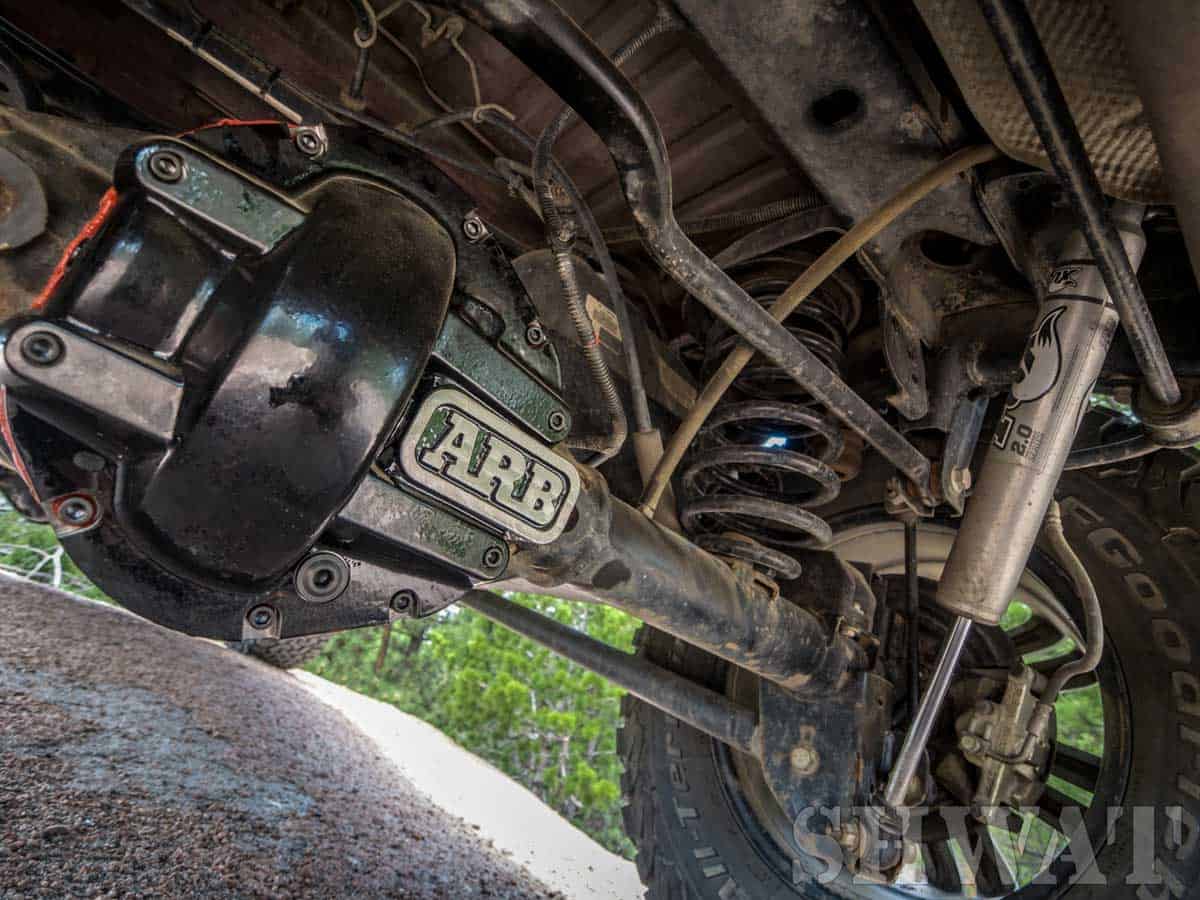 There’s a lot more going on here, however. As with all fluids, the level and condition need to be checked. The ARB covers have actual dipsticks making the task quick, simple and easy. Your factory ones don’t.
There’s a lot more going on here, however. As with all fluids, the level and condition need to be checked. The ARB covers have actual dipsticks making the task quick, simple and easy. Your factory ones don’t.
Built in magnets collect any metal shavings resulting from wear or damage. The design adds structural support to your axels. And, they flat our look amazing! I’ve seen plenty of lifted mall crawler jeeps that actually look good, but these diff covers scream, “We’re better than you!” Just saying… Oh, and while really tempted to get the red covers instead of black, red wouldn’t really work with the more maroon tone of my jeep. Maybe they will for you, though!
Axel Shafts
Speaking of strengthening axels, what about the shafts themselves? Sure factory axels are great for mall crawlers; massive overbuilt axels are ideal for rock crawlers. We’re somewhere in between, but with our safety in making it out of the back country paramount.
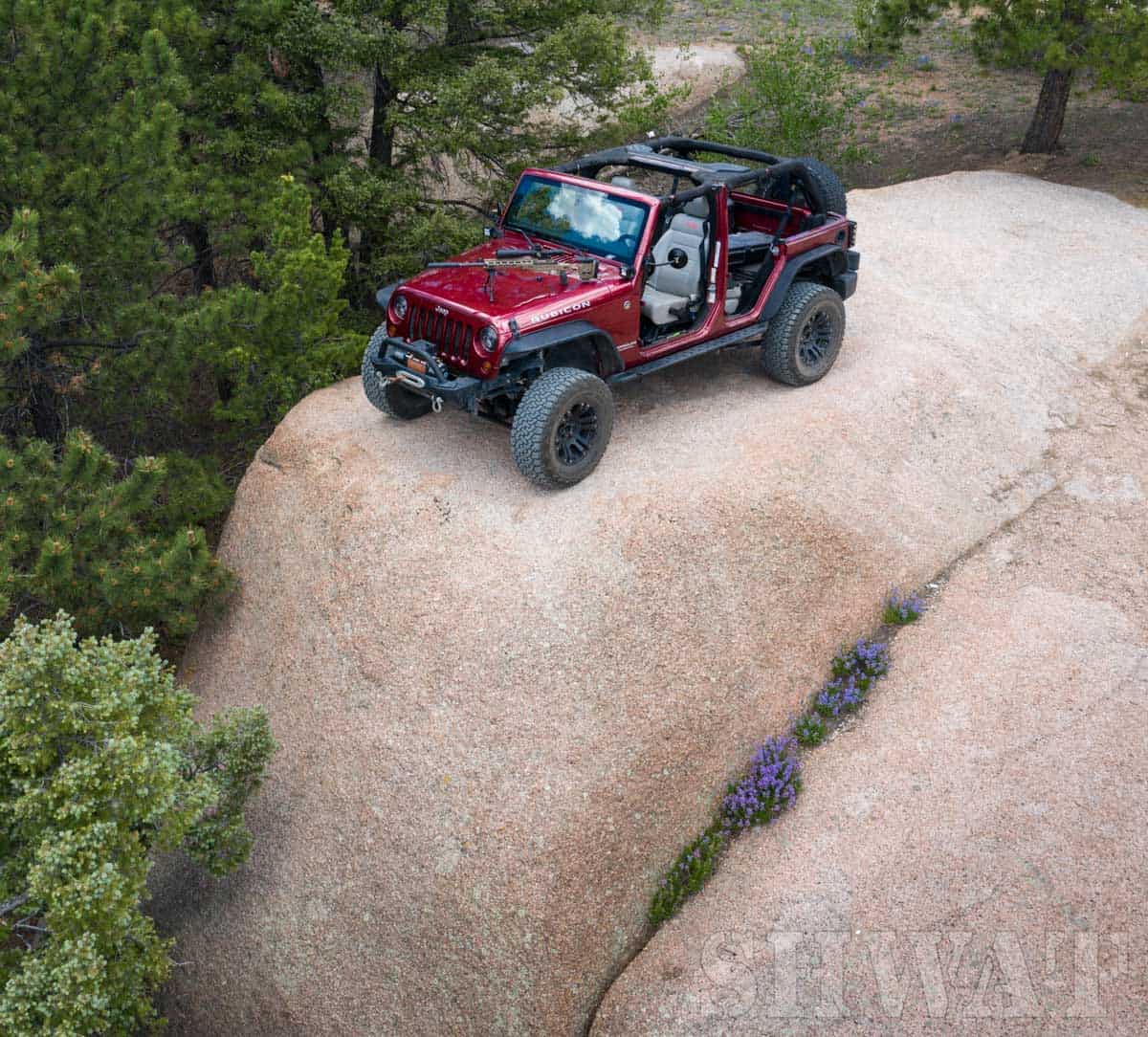 Like other well known breakage points on jeeps that travel down the path less traveled, a broken axel can leave you stranded. You’ve got thousands of dollars in guns and gear in your Ultimate Hunting Vehicle and if it breaks you’re going to walk out, leaving all that for the bears or unscrupulous third parties to discover. No thanks.
Like other well known breakage points on jeeps that travel down the path less traveled, a broken axel can leave you stranded. You’ve got thousands of dollars in guns and gear in your Ultimate Hunting Vehicle and if it breaks you’re going to walk out, leaving all that for the bears or unscrupulous third parties to discover. No thanks.
At this point in the story you won’t be surprised to find out my u-joints were worn… So what do we do? Exactly, we upgrade. The shop, Extreme Terrain and I together concluded that the Mammoth Axels looked like the way to go.
I know, your waiting for me to use the word “beefy” to describe these. Extreme Terrain beat me to it. Of course they are, chromoly construction and black oxide coated to resist corrosion. The u-joints come preassembled, saving me some labor costs at the shop.
Tuner – The Real Magic
Mechanically, this part of our story has been all about beefy upgrades to parts that wear out or change the power delivery. Drive long enough, and you’ll have to replace ball joints, tie rod ends, etc. But re-gear and you’re going to need a tune that tells your jeep’s little brain what to do with the transplant.
While I’m putting this piece of the puzzle here at the end of this Ultimate Hunting Vehicle installment, please don’t read that as reflective of its significance. The Superchips Flashpaq F5 Programmer is nothing short of magical. Stop reading, go buy one.
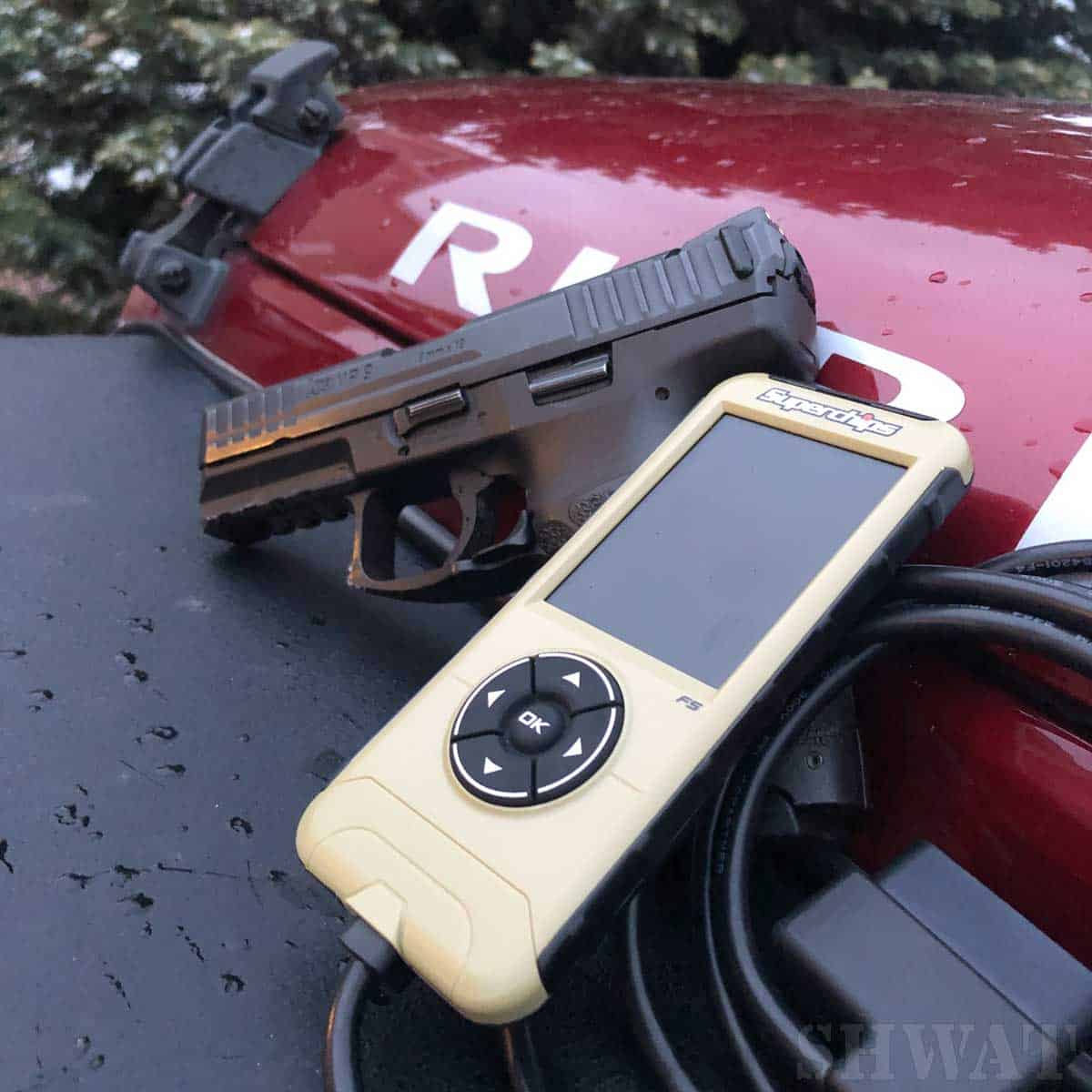
The Tuner is like a magic wand on a cable
Welcome back, I guess I could have told you why you should have stopped reading and bought one already.
There are a number of tuner choices you can get make depending on what vehicle you have and what kind of options you want to adjust. Some tuners will only do some basics like allowing you to adjust the tire size and clear annoying check engine lights.
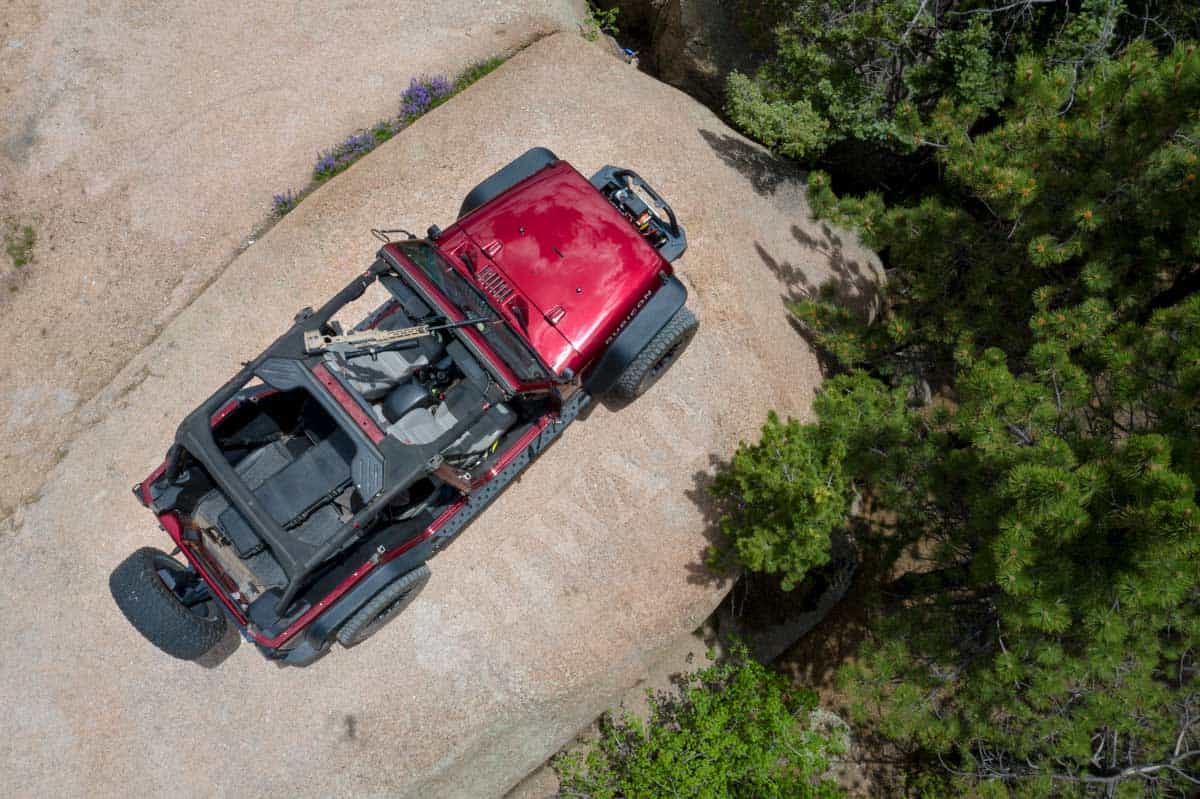 If all you do with your UHV is change the tire size, buy one of these. Before taking my jeep to the shop for this round of work I simply measured my tires and input that into the tuner. What an immediate difference! Why, oh why, did I not do this the week I bought this jeep? As I stated earlier, the driving experience frustrated me but I excused it. Don’t do that.
If all you do with your UHV is change the tire size, buy one of these. Before taking my jeep to the shop for this round of work I simply measured my tires and input that into the tuner. What an immediate difference! Why, oh why, did I not do this the week I bought this jeep? As I stated earlier, the driving experience frustrated me but I excused it. Don’t do that.
My tuner also includes preset tunes for towing, various octane level and a crawling tune. I’m experimenting with the octane levels, but it looks like I can get stronger performance and better gas mileage with these options. Win again!
Wrapping It Up
In Part 1 we cut off the factory suspension and welded on the Teraflex Long Arm kit. That was a massive change and a great choice. Starting over, though, I wonder if we should have started with this installment. Things wear out and they should be addressed in a timely manner. Why not upgrade?
Break an axel or have your steering go out while hunting and you’re probably in a lot more trouble than dealing with clearance issues. If like me your UHV is your daily driver, the re-gear and tune will alleviate frustration with daily smiles, not to mention giving you far superior performance when you need it in the back country.
We’re not done yet, there’s more to come on the Ultimate Hunting Vehicle Build. As always, I hope this series helps you with your own UHV project, whether it’s a jeep or not (though it should be!). Keep scrolling down for Parts 1-5 of the UHV build.
